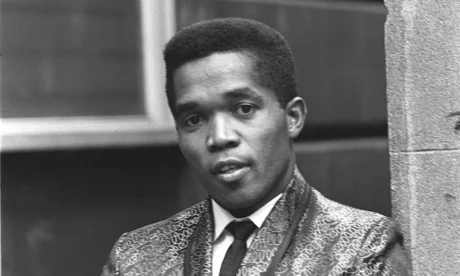Ska emerged in the late 1950s and is widely considered the first truly modern Jamaican music genre. It was the precursor to both rocksteady and reggae and became the first Jamaican genre to gain international popularity.
Musical Characteristics of Ska:
- Instrumentation: Ska bands typically feature a strong horn section (trumpet, trombone, saxophone), electric guitars, bass, drums, and keyboards.
- Rhythm & Style: Ska is known for its upbeat tempo, syncopated rhythms, and strong emphasis on the offbeat, which creates a “bouncy” feel. The bassline is prominent, and the horn section often plays melodic riffs.
- Dance & Culture: Ska music was associated with the “rude boy” culture of 1960s Jamaica, influencing street fashion and dance styles like the “skank.”
Famous Ska Artists & Songs:
- The Skatalites – Considered the pioneers of ska music, this instrumental group played a crucial role in defining the sound. Songs like “Guns of Navarone” and “Phoenix City” remain classics. Members like Don Drummond (trombonist) and Roland Alphonso (saxophonist) were legendary musicians.
- Prince Buster – A key figure in early ska, Prince Buster produced some of the genre’s biggest hits, such as “Al Capone” and “Madness,” which later inspired the British ska revival band Madness.
- Derrick Morgan – One of ska’s biggest stars, Morgan had hits like “Forward March,” which became an anthem for Jamaican independence in 1962.
- Desmond Dekker & The Aces – While he later became famous for reggae, Desmond Dekker’s early career was rooted in ska. His song “007 (Shanty Town)” is a classic that was popular among Jamaica’s rude boy culture.
- Toots and the Maytals – Before transitioning to rocksteady and reggae, Toots Hibbert and his band were ska stars with hits like “Six and Seven Books of Moses.”
- The Ethiopians – Known for ska classics like “Train to Skaville,” they were one of the first vocal groups to emerge from the ska era.
Ska’s Global Influence:
- In the UK, ska gained a massive following among the Mod and skinhead subcultures in the 1960s. This led to the 2-Tone movement in the late 1970s, with bands like The Specials, Madness, and The Selecter blending ska with punk rock.
- In the US, ska influenced punk and alternative music, leading to the third-wave ska revival in the 1990s with bands like No Doubt, The Mighty Mighty Bosstones, and Sublime.
Ska’s Evolution:
- 1st Wave (Jamaican Ska, 1960s): Led by artists like The Skatalites, Prince Buster, and Desmond Dekker.
- 2nd Wave (UK 2-Tone Ska, late 1970s-1980s): Bands like The Specials and Madness revived ska with a punk edge.
- 3rd Wave (Ska-Punk, 1990s-2000s): American bands blended ska with punk, alternative, and reggae.
Ska continues to be a foundational genre in Jamaican music and remains popular worldwide, with ska festivals and bands still thriving today


